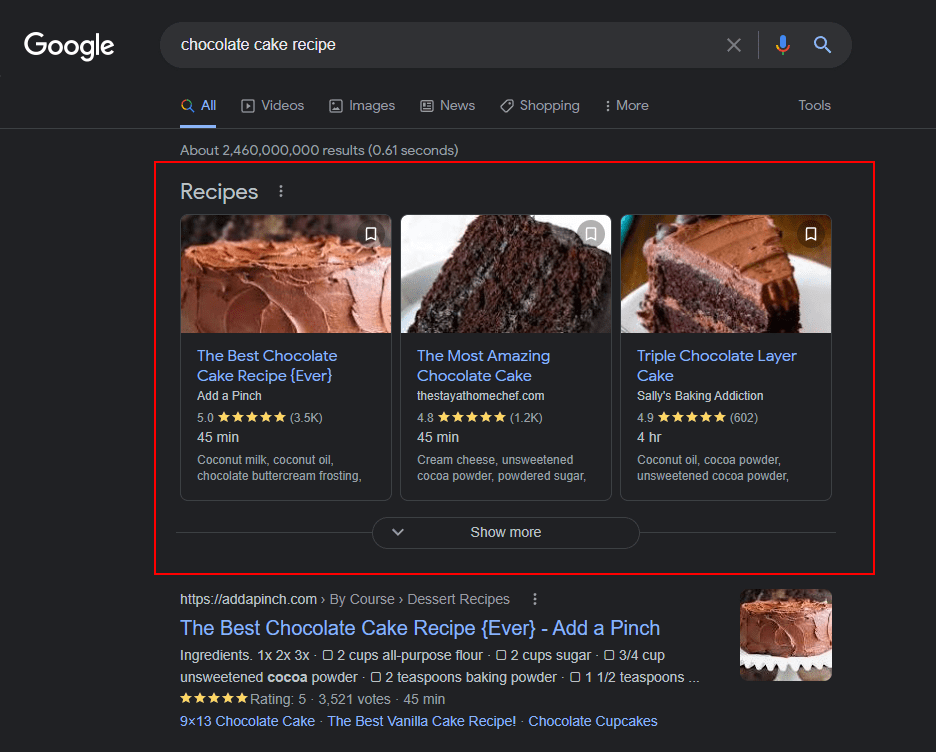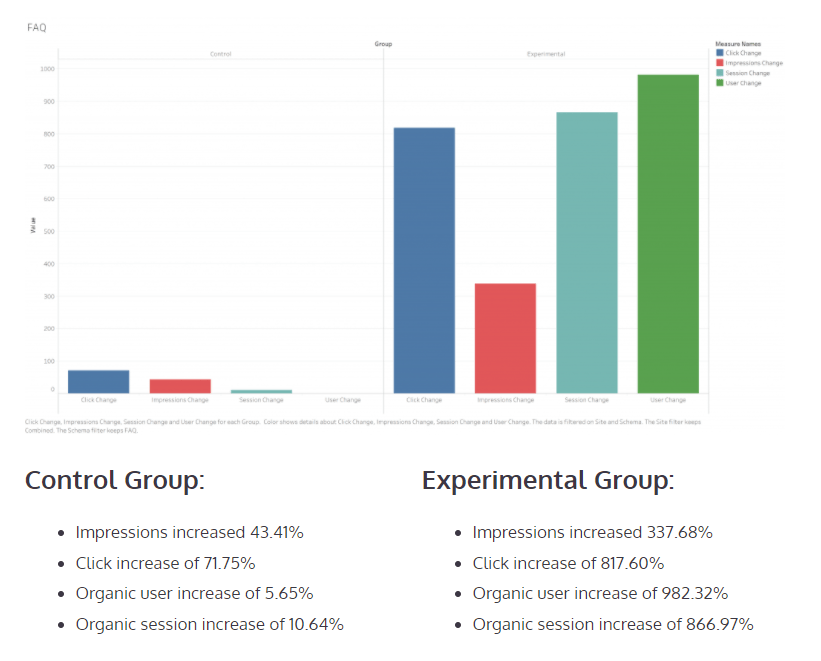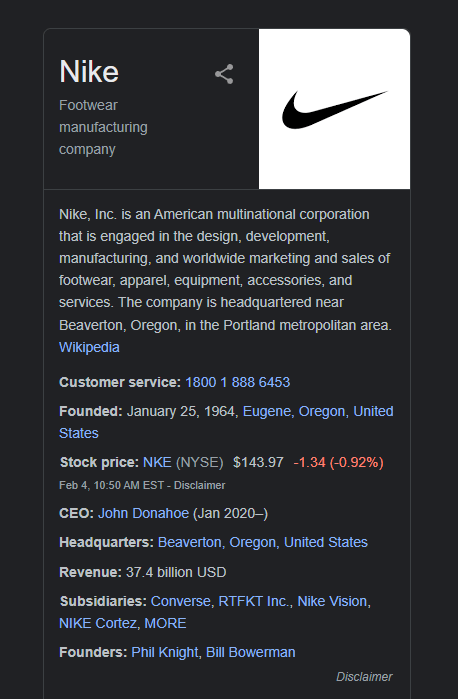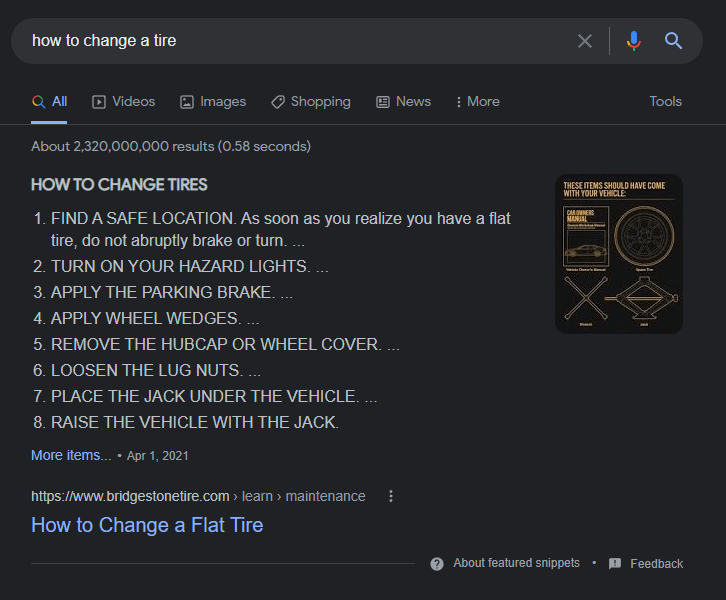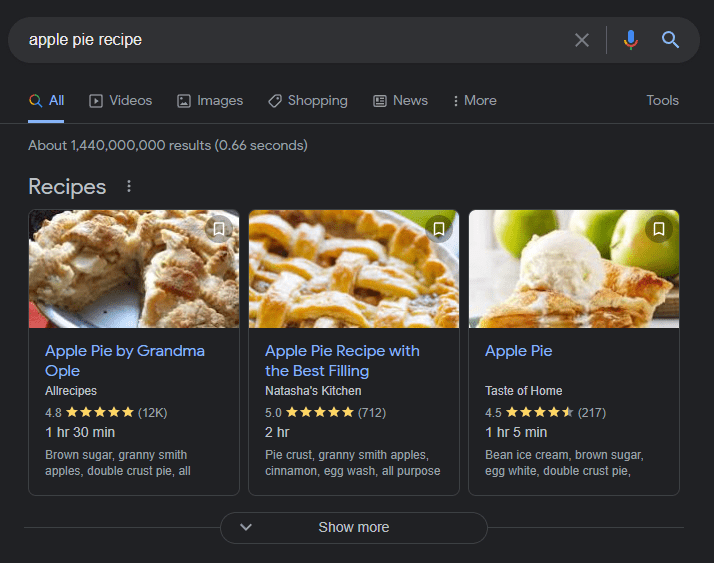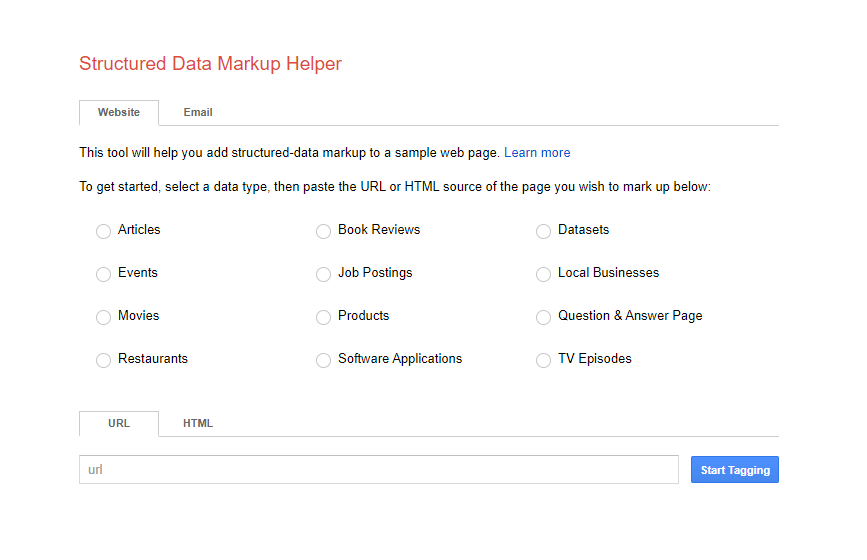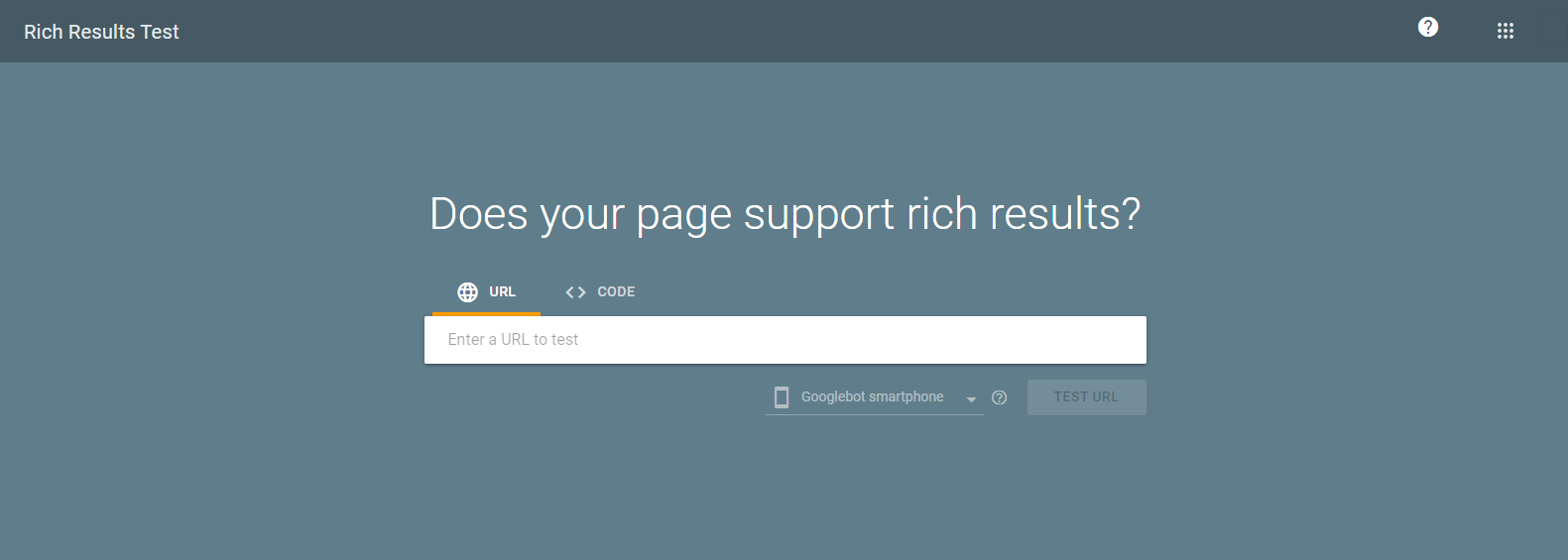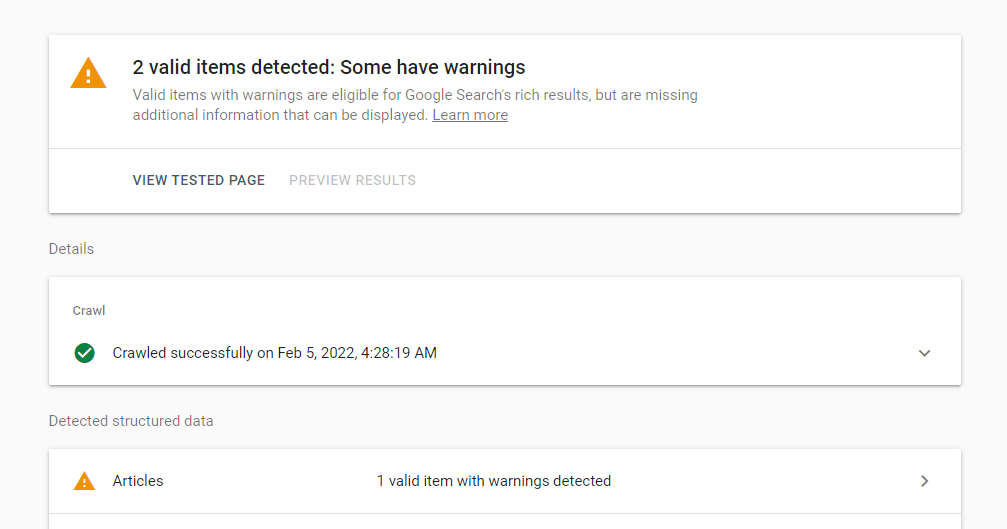With SEO, any advantage you could have over your competitors makes a difference. So while Google’s coveted number one position on search queries isn’t a guarantee, you’d want to be as close to it as possible. Or at the very least, you want to be on the first page of Google search results.
But what if we told you that reaching the number one position isn’t the only way to outperform the competition?
Today, we’re taking a look at structured data for SEO and how it can impact your website traffic and sales.
What is Structured Data?
Structured data refers to information that search engines like Google use to determine what a web page is all about.
For example:
If a page contains information like a list of ingredients, measurements, and a set of instructions then Google will know that it’s looking at a recipe.
Knowing this, you can begin to imagine just how helpful structured data is for search engines. Because it now knows the context behind a landing page’s content, it can deliver more relevant search results to its users.
That’s the main reason why SEOs add structured data markup when creating pages on their websites. And it’s also the reason why you should as well.
Unstructured vs Semi-Structured Data
While this post will primarily focus on structured data, it’s worth noting that there are two other data types out there: semi-structured and unstructured data.
Unstructured data is exactly what it sounds like. These are pages that lack structure as far as information is concerned. This does not mean that a page is poorly written though. What unstructured data implies is the lack of data Google needs to figure out what the page is about.
This could be better explained with an example.
If your name appears on a blog post as the author, Google wouldn’t know how to process that information. But when you use structured data, you can mark your name as the author of the post.
Most of the content that gets published every day is unstructured data.
The same can be said for media files like photos. As good as the image might be, Google won’t be able to tell what’s in the image. The technology isn’t there yet.
What you can do is add some information that can at least help Google interpret the image. That’s what semi-structured data is all about.
Semi-structured data makes use of information that’s attached to files or inserted into a post. The most common example would be metadata but other types also exist like tags or attributes. These are usually added to a page’s HTML.
So if you upload an image of a dog to a website as is, it’s most likely unstructured data. But if you add meta tags like “dog” or “puppy”, then it becomes semi-structured data.
Semi-structured data is the happy medium between unstructured and structured data.
However, those who know how to use structured data will always do so since it has the biggest impact on search engines.
Why Structured Data Is Important for SEO
We know that Google likes structured data. But why? What does it do with that information? And how will that affect how your pages rank in search engines?
First of all, it should be pointed out that structured data is not a ranking factor — at least it’s not right now. So whether or not your site uses structured data, your chances of ranking higher in the search engine results pages (SERPs) will still rely on other established ranking factors like onpage optimization and backlinks.
So what then is the point of having structured data?
It’s simple: Better Visibility.
We’ve already mentioned how Google likes to offer relevant search results to its users. It’s basically the whole point of using Google, after all. And that’s why Google started using structured data in a creative way.
Thanks to structured data, search engines understand the context behind a web page. So when someone enters “chocolate cake recipe” in the search bar, Google will know which pages have that information.
Google will still deliver search results related to the query. But on top of that, it will also highlight several sites with structured data that contain the information the user wants.
These are called rich snippets and they’ve been part of Google for some time now. It can be described as a subset of structured data markup. You may have come across these snippets when performing searches on the internet.
What makes rich snippets great is that sometimes they don’t count toward the top ten search results. So even if your page doesn’t rank in the top ten results, there is a chance for you to appear on page one.
Just to be clear: There are times when a landing page can appear both as a rich snippet and a search result. In the example above, all three featured snippets happen to also be the top three search results for the query “chocolate cake recipe”.
But you can see how rich snippets were able to give some pages visibility on search engines.
With all of that said, here are some of the benefits of using structured data.
Establishes Authority
When your landing page appears as a rich snippet, it stands out from all the other search results. Not only that, your page sits on top of all the other results. Thanks to structured data, you’ll appear more authoritative than your competitors.
That’s a big deal since users want to find answers from sources they can trust. And when Google puts a spotlight on your landing page, it’s as if your answer is getting the seal of approval. So people are more likely to trust you as a source.
And if your pages get featured as rich snippets all the time, people will see your website as an authority figure in your niche. So it’s not only good for your website but for your overall branding as well.
Gets You More Clicks
Rich snippets lead to better click-through rates (CTRs). And the reason is simple — They help you stand out from the crowd.
Snippets are presented differently from the rest of the search results. It can include images. And it tends to show a better representation of your content compared to the meta title/descriptions that normally accompany a search result entry.
Simplified Search presented its findings on the impact of structured data markup. In the case of frequently asked questions (FAQs), there was an 817.60% increase in click-throughs compared to the 71.75% clicks recorded for the control group.
That’s not even accounting for the increase in impressions, organic users, and organic sessions.
Provides Valuable Information to Users
Structured data does more than just help your pages show up in the search results. It’s also one of the ways that people can learn more about your business.
You can label parts of your contact or about us page to let Google know what each detail represents. You can label phone numbers, your business address, email address, operating hours, and other elements that would help potential customers.
So when someone searches for your phone number, for instance, then Google can display it in the search results. The user doesn’t even have to click a link to find that information. That’s one of the reasons why structured data is so powerful.
Introduction to Schema Markup
All major search engines rely on structured data markup to understand the context behind a web page. That leaves web developers in a tricky spot.
If search engines all implement different ways to process structured data, which one should developers use if they want to rank for all platforms?
That’s where schema markup comes in.
Schema.org is an organization that was founded by four search engines: Google, Yahoo, Microsoft, and Yandex. The main goal is to develop a way for all platforms to handle structured data online.
In simple terms, the group created a language that all search engines can interpret. That way, a web page will only need to use one schema markup and make its information available to every search platform.
Schema.org is the reason why there is a standard for structured data.
Types of Schema Markup
Schema refers to the language used by search engines to implement structured data. But there are actually different formats available for webmasters to use. They all accomplish the same thing. But by having three options, developers have a choice on how they want their structured data to be rolled out.
JSON-LD
JSON-LD is the most popular format today and is the recommended option for anyone that’s just about to step foot into the world of schema markup. Not only is this the format that Google wants people to use, but it’s also lightweight — meaning it won’t slow your site down.
The best part about JSON-LD is that nobody will be able to see it but the search engines. The data isn’t hidden in the HTML file itself. Rather, you insert a script in the <head> or <body> of the HTML using Javascript.
Microdata
Microdata used to be the industry standard but it has been surpassed by JSON-LD since then. Here, the structured data is inserted directly into a page’s HTML code. That’s why it runs the risk of crashing the website if not implemented correctly.
Another downside to using microdata is that it takes time to implement. This is because you’ll have to mark every page element that you want to label just to get microdata to work.
That also means you could have a difficult time editing or removing structured data should you need to.
These are just some of the reasons why we’d still recommend using JSON-LD over microdata for developing your structured data markup.
RDFa
RDFa is similar to how microdata works. You’d still need to embed the information directly into the HTML. While RDFa is based on Facebook’s Open Graph meta tags, it’s the least used format of the three that we discussed here.
Structured Data Implementation
How are search engines—Google to be more specific—implementing structured data in their search results?
Let’s talk about structured data implementation.
Google has come up with different ways of featuring landing pages with relevant schema markup within them. Let’s go over some of them.
Knowledge Graph
You’ll find the knowledge graph on the right side of the search results page. It’s presented as a summarized version of the information you’re looking for. If a site contains factual and sufficient information on the topic, Google will pull data from the landing page and display it beside the search results.
A knowledge graph could include other information that people may find useful like a company’s stock current price, its CEO, revenue, and subsidiaries. You can also find links to its official social media pages. You might also discover related searches.
If you searched for a real person such as a celebrity, you can find a short autobiography along with that person’s age, birthday, height, family, and accolades. You will also see a list of movies or TV shows they starred in.
And if you searched for food, the knowledge graph might present you with details such as its definition and its nutritional facts.
Think of it as an aggregate of information that Google pulled from what it deems as a reliable source.
Rich Snippets
A rich snippet is the most popular type of structured data. These are elements that appear just below a search result like ratings or business locations.
In the case of the example above, the rich snippet for Target’s Instant Pot listing included details such as the product rating, number of reviews, price, and inventory status.
Should you search for a recipe, a search result might show cooking times, cuisine type and other relevant information. It can even show a thumbnail image of the recipe you searched for.
The additional information found on search results gives users a better understanding of the page that they’re about to click. Unlike links that don’t have structured data, rich snippets will enable users to decide whether a link is worth exploring or not.
But in most cases, they actually click these links since they already know what they’re getting when they do.
Featured Snippets
Featured snippets take up the upper part of a search results page and often feature a direct answer to a user’s query.
Because featured snippets are positioned above the number one search result, its placement is often referred to by marketers as position zero.
The information shown is pulled directly from a landing page. There is a link that people can access if they want to view the full content.
In the example above, the featured snippet answers the query “how to change a tire” by showing a step-by-step guide. However, a featured snippet can also come in the form of a graph, a table, a list, and more. It will depend on the context of the search query.
Because people tend to click the first result in the search results, marketers will do their best to optimize their Schema markup so that their linked data will fit their target keywords.
Featured snippets can pop up for queries that need to define a term, compare items, or show how to do a task.
Rich Cards
Rich cards are similar to rich snippets. The difference is that rich cards are designed for mobile users.
These are placed on top of all the other search results just like featured snippets. However, each entry shares the space with other relevant search results.
Since Google is more focused on mobile users, we highly recommend that you look into structured data specifically for this purpose.
Adding Structured Data to Your Website: Best Practices and Tools
While the whole concept of structured data may look complicated, it’s really not. With some practice, anyone could master structured data and the use of Schema markups.
The main challenge would be identifying page elements and labeling them correctly. This task might sound simple enough but if there are too many elements on your landing page, then it would be easy to miss or mislabel certain elements.
We highly encourage that you start with your best-performing pages. Since they’re already getting traction, you’d want to make sure that its structured data is ready for search engines.
And as we suggested earlier, try to use the JSON-LD format instead of the others.
How to Generate a Schema Markup
You can manually generate a Schema markup completely from scratch. But if you’re not so confident with the process, we’d advise against it. Not only is this process time-consuming, but it’s also way more complicated than it has to be. You could end up with errors that might affect your site’s performance.
The easier and more efficient option is to use a Schema markup generator. Not only are these user-friendly, but most of them are free to use as well.
You can use the following markup generator tools:
- Google Data Highlighter — The Google Data Highlighter is a part of the Google Search Console. To use it, all you need to do is enter the URL of your landing page then highlight specific sections of the page just like you would in a Word document. For example: After highlighting the title of your blog post, you can right-click the text and label it “Title”. From this point on, Google will know that this is where it can find the title of your blog post.
- Google Structured Data Markup Helper — This Google tool is similar to the Data Highlighter. But in this case, you’re able to categorize pages on a deeper level. Here, you can set what type of content your site offers. You can specify your landing page category: article, events, movies, restaurants, book reviews, job postings, products, software, datasets, local business, Q&A page, or TV episode. Then you can start tagging your landing page for details.
- Schema Markup Generator — The Schema Markup Generator by Merkle is a good alternative if you don’t want to use Google’s tools for whatever reason. It almost works the same way though, in our opinion, this has a slight advantage as far as the user interface goes.
Whichever markup generator you end up using, make sure to label elements correctly so that you get the best results. If you’re a WordPress user, you can install plugins that’ll help you manage your structured data. Yoast SEO is a good option since it’s a well-known and reliable plugin but it’s far from the only option.
How to Test a Schema Markup
After adding schema to your landing page, you’ll want to test it to make sure that everything’s working as it should.
Fortunately, there are free Schema markup testing tools available online. These will let you know if you ever need to make adjustments or not.
You can also use Google’s Rich Results Test to determine if your labels are enough to generate a rich snippet.
Using the tool can’t be any simpler. All you need to do is to enter the URL of your landing page and watch Google do the rest. Just give it a couple of minutes to do its thing. After the analysis, you’ll see what issues were flagged if there are any.
There is another tool called Schema Markup Validator that works almost the same way.
How to Add a Schema Markup
The Schema markup can be added to a landing page manually by adding the script provided by your structured data markup generator of choice. You’ll add it to either the <head> or <body> of the landing page’s HTML code.
But there are alternative methods.
If you’re using WordPress, you can use a plugin to automatically add Schema markup for you. But it should be noted that doing it this way might have some limitations since these plugins tend to lack flexibility.
One way of adding structured data markup is by making it a part of your Google Tag Manager. Since this is one of many Google tools that online marketers like to use, there’s a chance that you’re already using it already. Just add the code there and it should start working.
Conclusion
While we’ve used Google as our primary use case for structured data, this is a huge help for all search engines. Without it, these platforms will have a hard time understanding the data on a landing page.
But the benefits of structured data are passed on to you too.
Having structured data will improve your CTR which, in turn, improves your site traffic. It might even lead to a surge in sales if online businesses use it correctly.
That’s the reason why everyone needs to utilize this feature properly.
